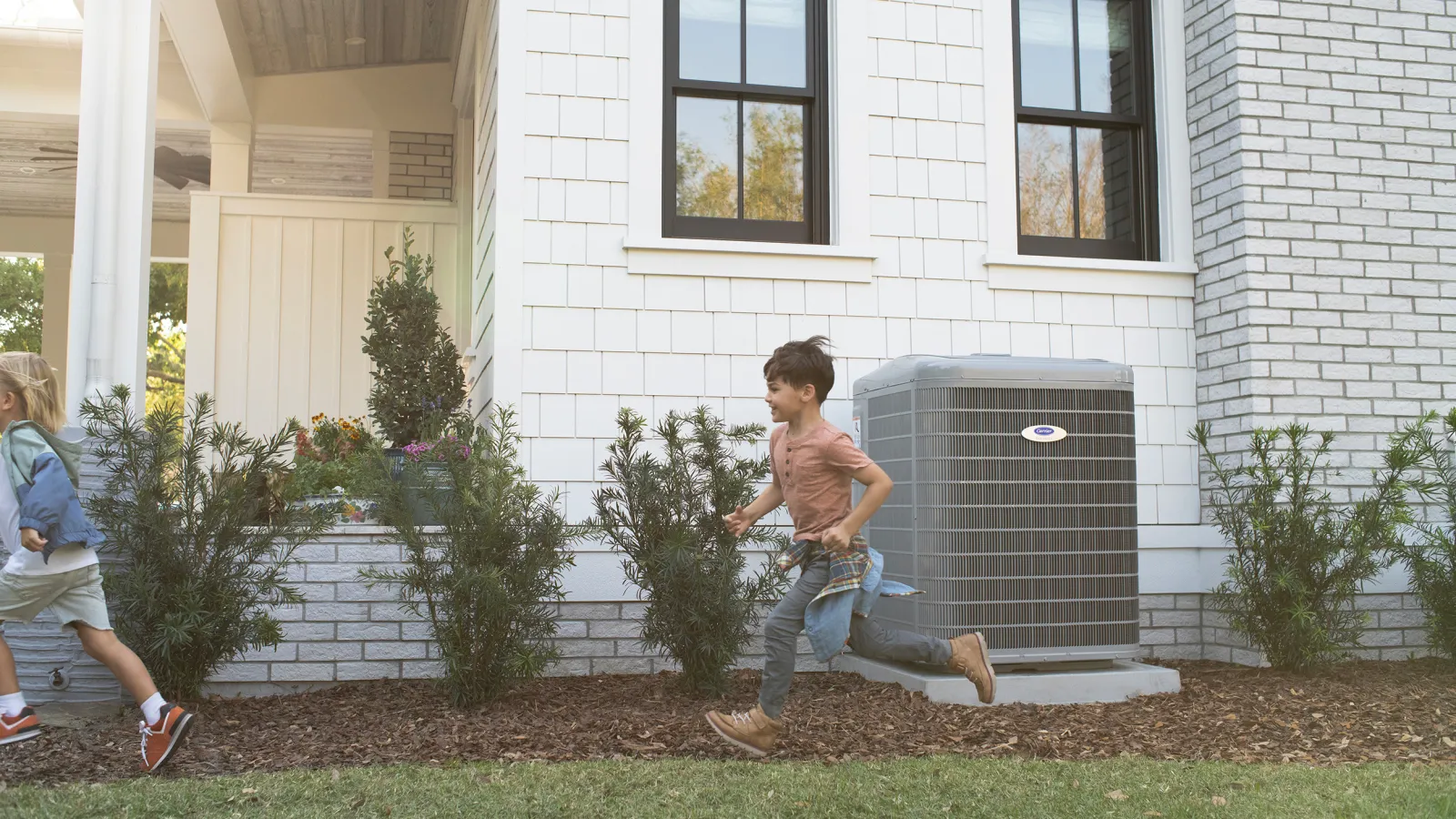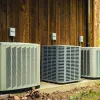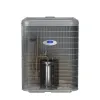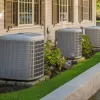Air conditioner size matters. More so than brand, SEER, or the number of compressor stages, the size of a central air conditioning unit affects your comfort in a major way.
And as we’ll soon see, the size of your AC is especially important in humid climates.
If you’re hoping a simple chart, map, or calculator can answer the question, “What size AC do I need?” well…
Let’s just say that calculating AC size — and calculating it the right way — is way too complicated for that.
Yes, some websites will show you charts and climate zone maps and let you plug in the square footage of your house to determine the right AC size. The problem with that approach is that there are lots of factors other than local climate and square footage that play a role in your AC’s performance.
Consider a hypothetical 1,400-square-foot home in Georgia. Does it need a 2.5-ton AC like the old rule of thumb says? A lot of the time, yes.
But what if that house is well insulated, faces east, and is surrounded by large shade trees? In that case, it might only need a 2-ton AC. The 2.5-ton system might have seemed ok based on square footage alone, but 2.5 tons is too much for this home. That kind of cooling capacity might make the occupants less comfortable — not more.
Why is an oversized AC bad?
It’s bad because it won’t remove enough humidity to keep the occupants comfortable.
Your AC has two jobs:
- lower the temperature
- remove humidity from the air
But the AC only kicks on when your thermostat tells it that the temperature is too high. For a properly sized AC, this is fine. It will remove the appropriate amount of heat and humidity from your home even though it’s only responding to temperature fluctuations.
But if the AC is too big, it will lower your temperature really quickly. It won’t run for a long enough cycle to dry out your house. The result is that the thermostat reads 75 degrees (a seemingly comfortable temperature), but you’re still really uncomfortable because the air still holds a lot of moisture. To remove enough humidity, an AC needs to run for a while. Oversized units turn on and off much too quickly.
If you live in a dry climate, this might not be such a big deal. But we live in Atlanta. Here, an oversized air conditioner is a bad news.
Here’s how we determine the right size AC for your home
We perform a Manual J load calculation. It’s a series of measurements that ultimately show us the perfect size AC for your particular house, all of its unique attributes considered.
A couple of years ago, we wrote a whole blog series about the Manual J load calculation. For the nitty-gritty details, read those articles! If you’re just looking for the basics, know a load calculation includes information like:
- Number of stories
- Insulation types
- Insulation values in the walls, attic, and crawlspace
- Level of air infiltration
- Orientation of the home relative to the sun
- Type of roof and shingle type
- Ceiling heights
- Number of windows
- Size and type of windows
- Heat loss and heat gain, given the home’s attributes
- Duct location and duct insulation levels
And yes, local climate and square footage are considered. But they’re just as important as all the other stuff!
Out in the field, we have a special software application that we use for load calculations. After recording all of the necessary data, we enter it into the application. Then the system shows us the right size AC for a home with the provided attributes.
Finally, we perform a Manual S. This exercise draws on the Manual J results to help us home in on the right type of equipment. Given the attributes of your home (this is the territory of Manual J), this final step helps us select the right components.
What size heat pump do I need?
Same answer. You’ll need a professional to perform a Manual J load calculation to determine the right size.
If you have an all-electric air source heat pump, that system is your air conditioner. The only difference is that the heat pump works in reverse during the winter to heat your home. In any case, the same sizing protocol applies.
But an HVAC contractor just came to my house and suggested an AC size without doing all of that stuff.
We know. Most HVAC contractors don’t bother doing things the right way.
Performing a Manual J load calculation takes time. It also takes a certain level of expertise and requires some special training. All of that stuff costs HVAC contractor’s money, which is why most of them don’t bother with it.
The way we see it, we’d prefer that our clients be comfortable in their homes and happy with their air conditioners for many years to come. That’s why we perform a Manual J load calculation for every new installation.
Everyone knows air conditioning systems are expensive. After your house and your car, they’re often your biggest expense (unless you’re into airplanes or rare musical instruments). All we ask of our air conditioners is that they keep us comfortable when it’s hot and humid. A properly sized AC does that. An oversized one doesn’t.
Our company prefers to install the properly sized ones.
Are you ready to find out what AC size you need?
We can help with that! If you live in Metro Atlanta and are contemplating a new air conditioner, get in touch with us!
We’ll send an experienced consultant to determine the right size air conditioner for your home and provide an estimate for a new system.
The best part? You’ll know you’re getting the right size AC. No guesswork. No crossed fingers. No regrets.






